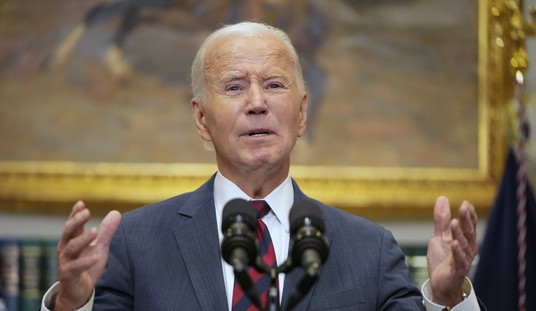As stocks endure their worst correction since 2011, and the battle between Fed doves and hawks rages on over a quarter-of-a-percentage-point rate liftoff, the much-anticipated August employment numbers made for a surprisingly mediocre report.
Nonfarm payrolls came in below consensus at 173,000. But private payrolls increased only 140,000, the smallest gain in five months. Compared with the average post-1960 recoveries, private-sector jobs are nearly 6 million below that long-run trend line.
The unemployment rate fell to 5.1 percent. But the labor-force participation rate remained low at 62.6 percent, as did the 59.4 percent employment-to-population ratio.
The best parts of the report were a rise in average hourly earnings and a gain in aggregate hours worked. Putting the two together, labor-wage income over the past year is running about 5 percent, and since there's no inflation, that will sustain real consumer spending. This is good news.
But earlier in the week the ISM manufacturing report was soft. And inside that report, new orders were especially soft. It's a sign that business-investment spending will remain the weakest part of the economic recovery.
I will make my usual plea: Can we please slash the corporate tax rate from 40 percent to 15 percent, allow full expensing of investment, stop the double tax on multi-national profits, and be sure the small-business S Corps can pay the new lower rate? A deep corporate tax cut would be the single most stimulative policy measure. It would turn a 2.5 percent economy into a 4-plus percent economy.
Recommended
But back to the Fed. What are they going to do? No one knows. If it were up to me, they would do nothing.
Commodity prices are falling. Treasury-market inflation expectations are shrinking. China is falling apart, and no one knows where the bottom is going to be. And the U.S. stock market slump may represent a markdown of future growth -- not only in the U.S. but also around the world. The highly touted second-half economic spring-back in America looks less and less likely.
So why should the Fed tighten?
Economist Michael Darda points out that corporate bond market credit-risk spreads are rising. That is, the difference between investment-grade bond yields and Treasury rates has widened enough to suggest not only slow growth now, but also the threat of recession in the next 12 to 18 months. It's a sobering point.
We know the Fed can't keep a zero target rate forever. But raising that rate now is more of a manhood argument (or for Janet Yellen, womanhood). And that's not much of a reason to raise rates. In normal times, with zero inflation on the major price indexes alongside commodity deflation, these market-price indicators would suggest a Fed easing, not a tightening.
And so much of the confusion stems from the fact that the Fed is still running a seat-of-the-pants policy based on the vagaries of monthly data points and daily stock market moves when it should adhere to a market price rule (commodity indexes including gold, the exchange value of the dollar, and Treasury bond spreads) that might really inform investors and govern Fed activity.
About a year ago, Paul Volcker -- the best Fed chairman of our time -- said this: "By now, I think we can agree that the absence of an official, rules-based, cooperatively managed monetary system has not been a great success." He was right.
For 20 years, Volcker, Alan Greenspan (most of the time), Wayne Angell, Manley Johnson and Robert Heller successfully employed a market-price-rule discipline that held inflation down and helped drive prosperity up. (Lower tax rates also held inflation down and drove prosperity up.)
But the Fed has no such rule today. So I'll offer a compromise thought that might settle the will-they-or-won't-they confusion that reigns over financial markets. How about a one-eighth-of-a-point rate hike? We could call it one-eighth and done. That would allow some Fed womanhood, but it's so small it shouldn't cause any additional deflationary problems.
Right now, the actual fed funds target rate is 14 basis points, with a zero-to-25 basis point target range. A one-eighth rate hike would move that range to one-eighth-to-three-eighths percent. And with massive excess reserves, the funds rate would probably trade at the low end of the range, which is to say that it wouldn't really change at all. It's virtually a target-rate hike that's not really a rate hike.
If you tell me that's a goofy solution, I won't really disagree. But it might calm the obsessive monetary confusion that is so bothersome to the marketplace.
Of course, a rules-based policy would be a whole lot better.
To find out more about Lawrence Kudlow and read features by other Creators Syndicate writers and cartoonists, visit the Creators Syndicate Web page at www.creators.com.
COPYRIGHT 2015 CREATORS.COM

























Join the conversation as a VIP Member